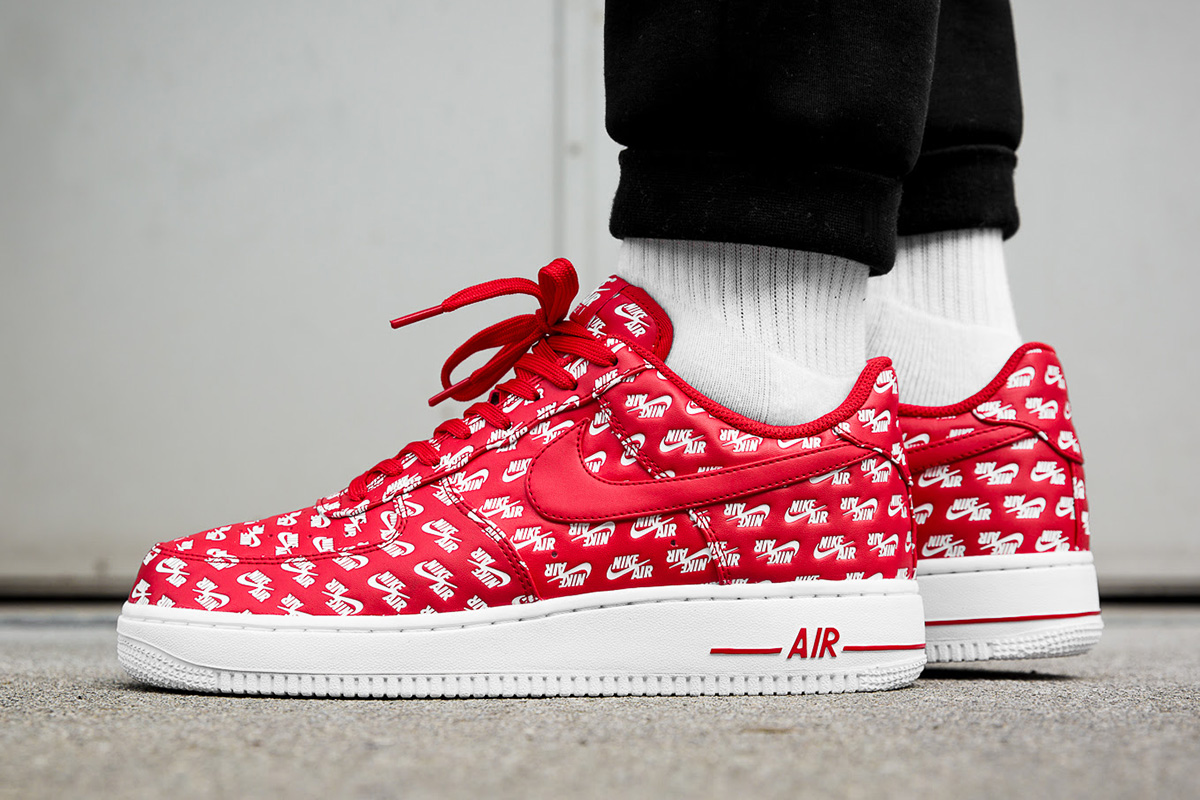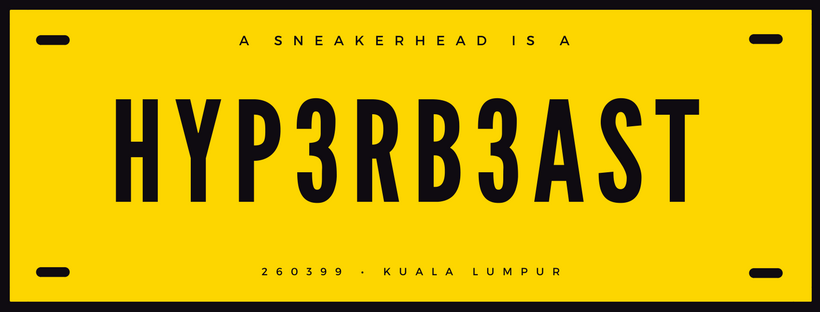|
 
In an era where the hype surrounding a sneaker can often elevate their worth in the market more than the style and comfort of the actual shoe, the term sneakerhead has lost some of its universal meaning. Before everyone was lining up for the latest pair of YEEZYs, there were only a handful of classic sneakers that everyone considered essential to their collection. Possessing an understanding of the stories and historical anecdotes behind these fundamental styles will lend anyone a greater appreciation for how sneaker culture has evolved over the last few decades, and where it could be going in 2017 and beyond.
Here’s a Hyperbeast-approved, suggested list of ten classic sneakers you should own if you want to call yourself a sneakerhead.
Adidas Originals Stan Smith

The original leather version of this silhouette was first introduced in 1963, designed for French tennis player Robert Haillet, before it was rebranded as the 1971 Stan Smith. At the time, Smith was the number-one-ranked tennis player in the world, having just won the US Open at the age of 24. The white leather upper, rubber outsole and signature green adidas “moustache” tab have coalesced to create one of the most recognizable silhouettes ever. Aside from the shoe’s namesake, this Stan Smith’s other notable claim to fame is its official listing in the 1998 Guinness Book of World Records, after 22 million pairs were sold worldwide. By 2016, Stan Smith sales surpassed 50 million pairs sold worldwide. The sneaker is still widely available today, and at an affordable price, and has been worn by everyone from A$AP Rocky to David Beckham.But you don’t have to be intimately familiar with the shoe’s history in order to wear it. The versatile sneaker has not only put more eyes on tennis footwear in general, but effortlessly bridges the gap between tastemakers and mainstream consumers. As one of the true OGs, and one of the easiest shoes to style, it’s a perfect starting place to start your sneaker collection.
Nike Air Max 1
Originally released in 1987, the Air Max 1 was a Tinker Hatfield-design, inspired by the Centres George Pompidou in Paris. The center’s inside-out design was a chief motivation in Hatfield coming up with the shoe’s revolutionary design, which features the first instance of visible Air Max cushioning underneath the foam of the midsole. The exposed air unit gave birth to the Air Max 90, Air Max 95, Air Max 97 and many other Air Max iterations, and even paving the way for 2017’s VaporMax.
The Air Max also earns top marks for comfort, and the OG red-and-white silhouette is a standout that will catch any sneakerhead’s attention. The Air Max was also the shoe that helped commercialize the Nike brand, catalysing global interest in the American imprint. The Air Max 1 “Revolution” commercial, soundtracked by The Beatles, featuring John McEnroe, Bo Jackson, and Michael Jordan, remains one of the most iconic ads ever.
Nike Flyknit Racer
Nike spent over a decade conducting research on Flyknit technology, creating numerous sample reiterations before introducing the Flyknit Racer in 2012. As a successor to Nike’s Flywire technology, in the same year, Nike introduced the Flyknit Trainer followed by the Flyknit Chukka in 2013. But the Racer arguably remains the most popular of the early Flyknit iterations, and the sneaker was named by Time Magazine in 2012 as one of the best inventions in the world, alongside other inventions including the Curiosity Rover and Google Glass.Many great versions exist – including the “Oreo” "Multicolour," and the recently released "Be True" Racers – but beyond the colorways, the Flyknit Racer belongs here for its performance qualities. The Racer, and Flyknit technology in general, were inspired by feedback from runners who wanted a shoe with the qualities of a sock, or, as Tony Bignell, VP of footwear innovation at Nike, said: “Runners want performance without any distractions.” The Racer achieved just that. Flyknit technology was a headline Nike story at the 2012 Summer Olympics in London, worn by medalists Ashton Eaton, Trey Hardee and Mo Farah. Performance-wise, the Flyknit Racer has received largely unanimous positive reviews, and has inspired the rise of other knitted textiles like adidas Primeknit and PUMA EvoKnit.
Nike Air Jordan III
The Jordan 1 will always be the OG, but the subsequent Jordan III is arguably the most beloved Jordan silhouette of all-time. Worn by Michael Jordan during the 1988 season, it remains an iconic Jordan iteration, with the perfect backstory to match. After the release of his first two signature sneakers, Jordan’s contract was up for renegotiation, and His Airness was not entirely impressed by what the company had done so far.In stepped Tinker Hatfield, who consulted and listened to Jordan’s feedback on what he wanted his third signature shoe to look like and feel. At the presentation meeting, Hatfield unveiled the much anticipated Jordan III, featuring the now-iconic “Elephant” pattern, and the visible Nike Air bubble. Jordan was thoroughly impressed with Hatfield’s design, and the rest, as they say, is history. In short, the Jordan III is an essential to any sneakerhead’s collection, and has become an undisputed streetwear staple.
Vans Sk8-Hi
The Sk8-Hi is a skateboard mainstay that was originally introduced by Vans in 1978, as just the second model with the famous Sidestripe logo. The sneaker singlehandedly brought a brand new aesthetic to skate parks everywhere, and remains an iconic look for any skateboarder, from amateurs to pros. Today, many skateboarders and BMXers still prefer the Sk8-Hi, as well as sneakerheads.The Sk8-Hi’s signature silhouette, featuring added ankle protection, was quite revolutionary in that it represented the first high-top skate shoe. It’s not an overstatement to say that this pair of sneakers is the symbol of an entire culture. It also stands out for its simplicity and affordability, which – given some of the over-the-top sneaker designs today – still makes the Sk8-Hi (and it’s low-top counterpart the Old Skool) a breath of fresh air almost 50 years since its debut.
Converse All Star Chuck Taylor
Today, the most coveted basketball sneakers are signature shoes from athletes; Jordans, LeBrons, Kobes, KDs, and the list goes on. But the true OG basketball sneaker that every sneakerhead has surely owned at one point or another? That would be the Converse All-Star Chuck Taylor, a style that was first produced in 1917, and the first mass produced basketball shoe in North America. The Chuck Taylor has eventually re-positioned from just an affordable basketball sneaker to a fashion statement, which has been adopted by subcultures around the world. Throughout the years, the style became a favorite of punk rock bands like the Ramones, skateboarders, off-duty celebrities, and many more There have been many iterations since the original launch – including the more recent ’70s Chuck Taylor with updated construction – but a classic pair of “Parchment” high-top Chucks is a necessary tentpole sneaker for any collection.
Nike Air Force 1
 An icon by any measure of the word, the Air Force 1 – designed by Bruce Kilgore in 1982 – was the first basketball shoe to implement Nike’s revolutionary Air technology, and one of the first basketball shoes to utilize durable cup soles. Kilgore was inspired by the Notre Dame cathedral when it came to brainstorming about how to angle the wide midsole of the shoe, but not only that, the design even inspired Tinker Hatfield and got him interested in shoe design. In a way, the Air Force 1 was not only a classic sneaker in its own right, but it also served as inspiration for other essential shoes that have landed on this list. The shoe also lays claim to being the best-selling athletic shoe in history.Today, the Air Force 1 is celebrating its 35th birthday, and remains one of the most popular sneaker models around, as evident through collaborations with relevant names including Supreme, Virgil Abloh, and ACRONYM. Outside of collaborations, the shoe is celebrated as a forebearer of sneaker culture, and even earned the nickname of “Uptowns” in Harlem, a neighborhood which has picked the Air Force 1 as their patron sneaker saint. And if that’s not enough, name another sneaker that Nelly has dedicated an entire song to.
|

